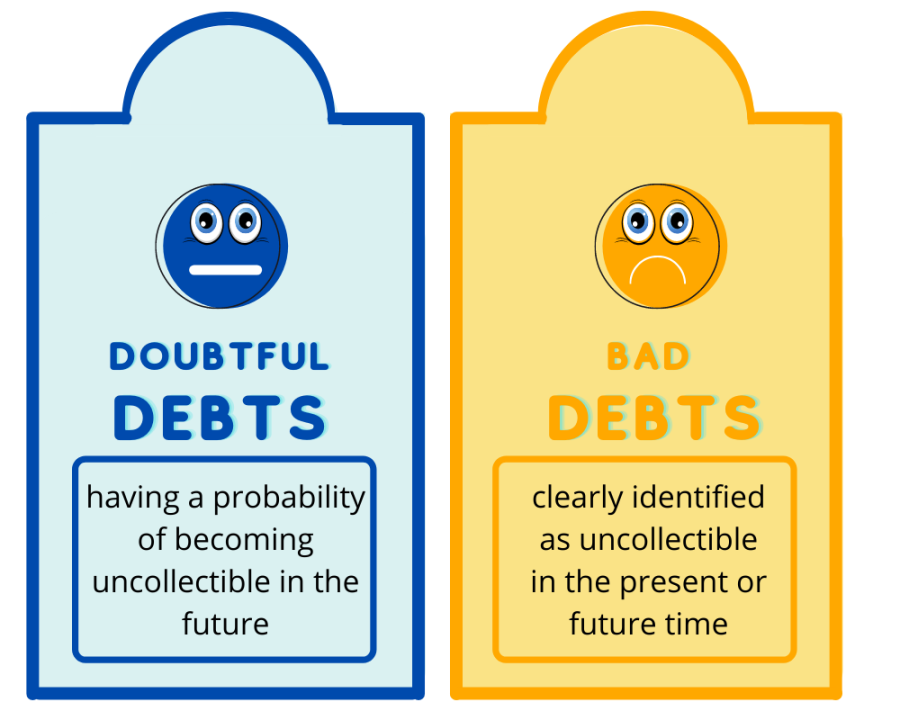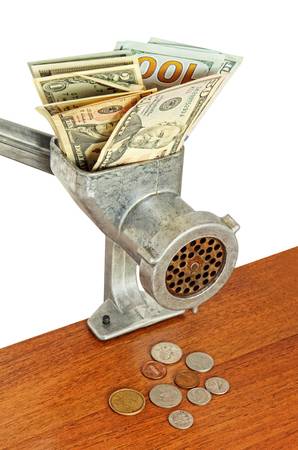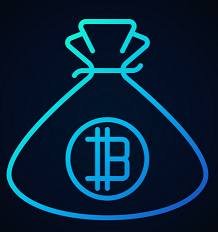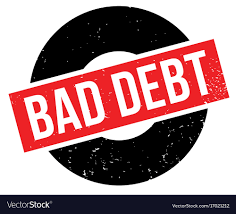Bad Debt! Bad!

Within the context of the legacy economy, bad debt is money owed to an entity that is pretty much guaranteed not to be paid back. Why the "guarantee" instead of just "extremely likely"? Ah well when corporations and banks and what-have-you realize they have bad debt: they don't hang onto it. They sell it to the highest bidder for pennies on the dollar. If they're lucky they'll get 5 cents for every dollar sold. This is how collection agencies outsource bad debt away from their "clients" and turn a profit for themselves within this weird middleman profession. Isn't that strange that you can buy someone's debt? Welcome to the fractional reserve system.

Of course there are certain situations where the debt will not be auctioned off to the highest bidder. In these cases the company will actually sue you for the debt because they have determined that:
- You can actually pay the debt but just aren't.
- The legal costs are significantly lower than the debt owed.
- The 'profit' earned (on average) will be higher than auction.
It's not hard to see why this doesn't happen very often, especially for something like credit card debt. It's simply not financially viable to go after someone for a couple thousand dollars when they can still 'lose'. They have to pay their lawyers, and even when they win the case, what happens if the defendant has no money in their banks account and has no wages to garnish? Wait a minute... I have no money in my bank account and no wages to garnish. Hilarious.
Interestingly enough, once the debt has been sold you can no longer be sued for it, as the new owner has no legal basis to do so, and bought the bad debt on purpose, so they have no legal excuse. Once bad debt has been sold, it's already been written off the books and deducted for tax purposes and all that, so the law starts getting convoluted as it changes hands.

Within the context of crypto: bad debt is quite different.
That's because crypto is the opposite of a fractional reserve. It's more of a collateral reserve where any debt issued ends up being wildly overcollateralized by volatile assets that could lose 50% of their value in a single day. Bad debt within crypto is surprisingly more confusing than even the legacy system.
Taking DAI as an example.
In terms of collateralized lending, I've done more research on DAI and MAKERDAO than any other protocol. Perhaps my DEFI research has been lacking over the last few years during the DEFI craze, but I still feel like I have a pretty good handle on it.
To mint 5000 DAI you'll want to lock up around $15000 worth of Ethereum. If Ethereum then loses 50% and your collateral is only worth $7500, your overcollateralization rate has dropped from 300% to 150%. This is bad, because the 150% ratio is the cutoff for when the network can start thinking about liquidating your debt to prevent it from becoming bad debt.
At this point, a user from the MakerDAO network is allowed to start the auction process on your CDP (collateralized debt position). This allows anyone to bid on your Ethereum. The minimum bid is 5000 DAI, but you still have $7500 worth of Ethereum left, so if the system is working properly: bots or humans will bid up that 5000 DAI up to around $7499. The 5000 DAI debt will be paid back and destroyed, leaving 2499 DAI leftover. This DAI now belongs to you, as your position has been liquidated, while all of your Ethereum belongs to the entity that bid 7499 DAI to buy up the debt that was potentially going to turn sour. In this situation they earned a dollar for their troubles.
This example also ignores the 13% penalty on liquidations. I'm not sure where that money goes. Probably to the bidder of the liquidated collateral. So instead of earning a dollar they'd earn either $975 or $650 or $325. I'm not sure if the 13% penalty is applied to the Ethereum, the DAI, or the difference in value between the two. All I know is that there is a liquidation penalty users should definitely try to avoid.
It gets worse...
Years ago during a flash crash on Ethereum the network was totally bogged down by transaction and operation costs were very high. This essentially broke the auctioning system on MAKERDAO and one single entity started the liquidation procedure... but there was no one else around to make bids on the debt. So instead of the 5000 DAI being bid up to $7499... no one else bid and one person was able to scoop all the collateral at a cheap price, leaving those who had CDPs open with nothing, even if they were trying to increase their collateral levels in real time, but couldn't because the network was so bogged down. People were pissed.
It gets worse...
In a couple of scenarios, the flash crash on Ethereum was so bad that the Ethereum collateralizing the CDP was worth less than the DAI loan. In the example above, the ETH would be worth less than $5000, giving zero financial incentive for anyone to liquidate the position and buy back the bad debt. In theory this leads to a situation where DAI could break its peg to the downside because it isn't being collateralized enough to justify its own value. And now finally I have explained bad debt in crypto.
The way MAKER handles this situation is that they (the governance token) is the buyer of last resort. MAKER will be printed out of thin air, diluting stakeholders and being dumped on the market to cover the difference and liquidate the bad CDP. As you can imagine, stakeholders get pretty pissed when this happens.

But is the theory an actual reality?
I've been thinking about this a lot recently, and it actually doesn't make a whole lot of sense. Imagine if there were billions of dollars of bad DAI debt floating around and in theory the network needed a couple billion dollars more ETH to collateralize the DAI.
Okay, now assume that a couple billion dollars of ETH moves in to collateralize the bad debt. How does that actually make DAI more valuable? Seriously: think about it. If all you're doing is moving ETH around how does that help DAI maintain a peg? I don't see how it could in this scenario. If anything it could push the value of DAI even lower as DAI could be dumped to buy the Ethereum needed to collateralize the DAI. It's all very strange.
On the flip side, liquidating CDP positions makes more sense because DAI is being bought off the open market and being used to close CDPs and then the DAI is destroyed, while the ETH within those positions is used as bait to make it happen. That makes sense, but increasing collateral levels (which is the preferred and incentivized method) does not.

I get the feeling that allowing bad debt to float around isn't nearly as bad as theory-crafters have been making it out to be. After all, we've never actually seen an algo stable coin that was allowed to have bad debt... unless you count SBD/HBD during haircut mode... which is a completely different scenario and not really comparable.
The obvious case to look at was TERRA/LUNA and UST but that is also completely different. The collateral was structured in a way that LUNA was simply printed on demand and crashed to zero as the debt ratio ballooned to infinity. If it had been set up like DAI it would have turned out completely different, and we would have gotten to see what happens when CDP loans are underwater with no bailout.
Clearly we still have much to learn.
Crypto is still in the infant stages and we still have no idea how a lot of this stuff works. We think we know how it works because we apply what we know about legacy economics and project it onto crypto. But crypto is largely the opposite system, so the ideologies employed have been wrong time and time again. There's no substitute for actual experience.

And I suppose now is as good a time as any to give a shoutout to Hive, the internal market, the stabilizer, and the conversions to and from Hive <> HBD. We haven't had a real failure of our stable coin since summer 2021, and even then those were spikes to the upside (which very few people complain about because blogging rewards begin to skyrocket). Those spikes also stress tested the Hive >> HBD conversions, and it worked. No one has dared to try manipulating our stable coin like that since. Good work.
The last failure to the downside was April 2020, and that long before a lot of our hardfork upgrades and just a month after forking away from Steem when we were still in an extremely vulnerable state. Since then liquidity on the internal market has done nothing but go up. We're in a good spot.
But we really have to ask ourselves...
What gives a collateralized token value? Is it really the collateral that does it, or simply the belief that it should? Trust is and actual usage are far more valuable than the collateral that backs some of these coins. And there are also many ways to increase the spot price of an asset that have nothing to do with collateral. The collateral is simply a way for the token to have scarcity and not be printed to infinity. Does it really matter that much if we head into a bear market and that initial collateral becomes worth less in dollars? I used to have a definitive answer for this (yes) but now I'm not so sure. I think there are many ways to play this game that we haven't even considered yet.
Conclusion
Bad debt is something that is pretty easy to understand within the legacy economy and a fractional reserve system, but we still have very little idea what it means and how it reacts within crypto infrastructure. The concept of "what gives something value" is the key. Many of us here already realize that pegging crypto to a physical asset sounds like a good idea, but actually has very little worth due to the centralized bottlenecks and logistics of procuring and securing the physical asset.
Bad debt is a really great example of how the decentralized paradigm is exactly the opposite of what we are used to and how much we still have to learn. It's also a great example of why we need so many networks in the first place. It's simply not appropriate to test these things on networks that can't afford to take a chance. The cutting edge will always be willing to risk it for the biscuit, and that's an exciting and terrifying prospect. It is what it is. Don't put all your eggs in one basket; I hear eggs are very expensive these days.
Posted Using LeoFinance Beta
https://twitter.com/1413161729106776065/status/1616128612037541922
The rewards earned on this comment will go directly to the people( @no-advice ) sharing the post on Twitter as long as they are registered with @poshtoken. Sign up at https://hiveposh.com.
Too many people need to read stuff like this. Good read as always!
Two things come to mind.
The reason why this happens is rooted in the fact that much of the financial system is nothing more than an exercise in moving risk from those who dont want it (or want to minimize) to those who do.
Why are mortgages securitized? Because banks then can move the debt from their balance sheets to those buying the securities tied to it. The buyer is assuming the risk.
The other is the notion that debt is bad because it isnt repaid. This is actually more in line with human nature. Not everything we do is going to work out. Hence, a certain amount of the debt (and money) has to be eliminated through default.
No matter how prudent the lending standards, a certain percentage will encounter loss of job, health issue, or other factors that mean they default. This leads to the foreclosures on homes and repo of cars. The rate will fluctuate based upon the business cycle but it is always there.
At the same time, businesses fail due to mismanagement, competition, or technology. We can have the best business plan or model yet there is still a chance we default. Whether this is bonds or a loan, the result is the same.
So with crypto, are we altering the program? Hard to tell. Money creation still entails a certain amount of failure, no matter how you slice it when. Thus, when we collateralize an asset, there is the value of that along with the ability to repay to consider.
By the way, this is volatility is a reason why collateralizing using an asset tied to a stablecoin is better than ETH or BTC. We can remove that from the equation with a bonded version of HBD as an example.
Anyway, volatility aside, there is still the repayment factor to consider. What is it that prevents you from paying is going to apply equally to the present system and crypto (one widescale lending is built out).
Perhaps we can do things to mitigage what is happens. It will be an interesting experiment.
Posted Using LeoFinance Beta
You remind me that I forgot about credit scores and how debt within the legacy economy can be sacrificed along with this reputation within society. In crypto we don't have these reputation systems (yet) so most debt is forced to be paid back through overcollateralization and forced liquidation.
Another thing to note here is that bad debt in crypto can just as easily swing back the other way. A bad loan today could see the collateral go x2 tomorrow and all of a sudden the CPD is back in the green.
It would be very interesting to see several algo coins form a credit union of sorts and allow their tokens to be minted by collateralizing other tokens within the union. This would stabilize every token within the credit union in a decentralized robust way.
There certainly can be ways to basket different coins or tokens together.
Of course, with HBD, my view is simply build robust use case by hitting on all the major components, and we will have something fairly stable.
Posted Using LeoFinance Beta
Really interesting concept. I was watching a video where Robert Kiyosaki was explaining a similar concept except to him "working for money" put you in dept forever following his number one rule...Don't work for money.
Somewhat ridiculous advice to give because statistically a huge percent of the population doesn't have any other option. Kiyosaki has some interesting views but a lot of the time he is just bullshitting. Just ask @taskmaster4450
True but there are ways the information can apply to the average Joe. I try 10% of my income in stable savings...I think that was where he was coming from when he explained that. Notwithstanding a lot of financial advice has to be filtered and calculated for its application in your subjective reality.
At the end of the day, you are still the captain of your ship
Wow, you game me a lot to think about and to reconsider. Some new points of view are always welcome, but a new perspective on risk. Scary!